Endorsements from famous people don’t carry as much weight as they used to. We now live in an age where consumers value the opinions of real people over big-name celebrities or even influencers.
So, what does that mean for brand advocates?
As pointed out by Convince and Convert, 92% of consumers trust brand advocates while only 18% trust influencers.
And what does that data mean for your brand?
For starters, your customers want authentic interactions with your brand. One of the best ways to build trust in your brand is by involving people your target audience relates to.
https://www.instagram.com/p/BwUwoiwHOv5/
Brand advocacy allows you to increase word of mouth around your company in an authentic way. When implemented correctly, a brand advocacy strategy enables you to build trust and grow your audience.
In this post, we’ll tackle the ins and outs of establishing a brand advocacy program for your business. You’ll also discover the right methods for identifying brand advocates and how to enable them to spread the word about your products.
What Are Brand Advocates?
Brand advocates are typically existing customers or employees who spread positive word of mouth about your products. These individuals know, like and trust your brand and they’re happy to talk you up to their friends, family and followers–usually for free.
What’s the Difference Between Brand Advocates & Influencers?
The difference between brand advocates and influencers is while both “spread the word” about your brand, influencers typically work transactionally, while advocates work more like your employees or biggest fans.
- Influencer marketing is highly transactional. You pay or sponsor influencers or micro-influencer to post content about your products and it works much like a celebrity endorsement, but at a smaller scale.
- Brand advocacy is all about harnessing the goodwill of people who are already familiar with your brand. While advocates can certainly be incentivized through product samples or free giveaways, their main motivation isn’t the perks— it’s the fact they genuinely feel connected to your brand.
Another distinction? Influencers talk to their “audience,” while advocates share their thoughts with their network of friends and relatives.
How to Successfully Identify Your Brand Advocates
Now that you’re all caught up with what brand advocates are (and what they aren’t), it’s time to figure out how to identify the right ones to work with. Below are the steps you can take when finding brand advocates.
Understand Your Target Market
The first step to identifying brand advocates is to get clear on who you’re trying to reach. Who’s your target audience? What’s their age group? What do they value? Answering these questions will help you figure out the right advocates to approach.
https://www.instagram.com/p/BtbmsPWgkYn/
Let’s say that you’ve decided to market to moms in their 30s who want to stay fit and work on meal prepping. You can do research on that audience and determine the types of people that they follow and listen to.
From there, you’ll have a better idea of the types of advocates to engage.
Look for People Who Are Already Talking About Your Brand
Once you have a profile of the types of advocates that you want to work with, run a social media search for people who are already mentioning your brand in their content. Here are six easy ways to do this:
1. Turn to Your Brand Mentions
Search your social networks for people who mentioned your brand name. Note that these mentions don’t necessarily have to be “official” tags (i.e., with an “@” sign). In many cases, you’ll find the most authentic brand mentions in these untagged posts.
Keep an eye out specifically for people who are responding to questions from other users. For example, in the Twitter conversation below, we see an authentic exchange between moms talking about infant car seats:
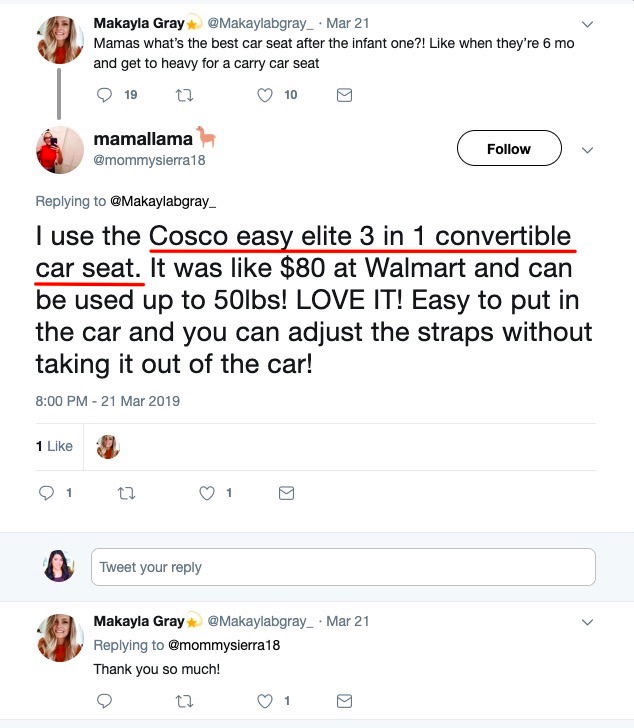
These are the types of posts to keep an eye out for. You can use social media listening tools to find and track conversations like this going on about your brand.
2. Look for People Who’ve Tagged You in Their Photos
If you want your brand advocacy program to be more visual, go through your photo tags to identify people who are talking about your brand.
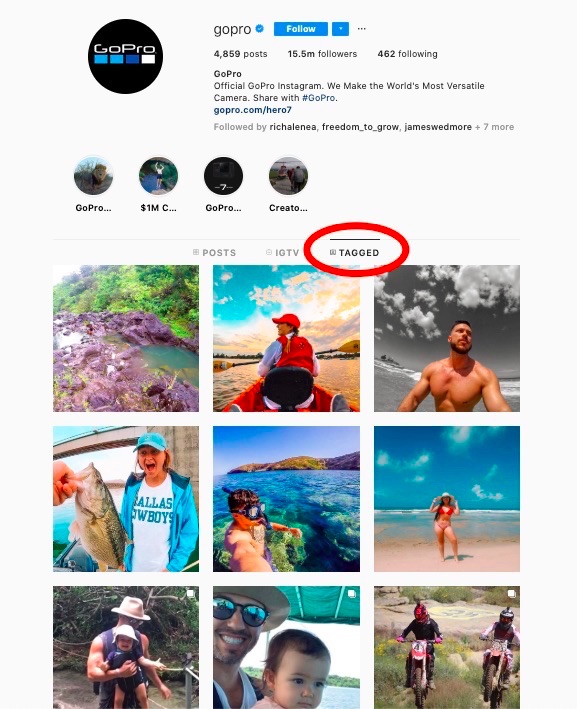
Once you find individuals who fit your advocate profile, put them on a list of users to reach out to.
3. Dig Into Your Product Reviews
The best brand advocates are the ones who are already buying from you. It’s smart to go through your existing customer base to identify advocates you can work with.
One of the easiest way to find previous shoppers who love your products is to look for people who are already sharing positive customer feedback about your products. Go through your ratings and review content on your product pages and identify those who left positive reviews.
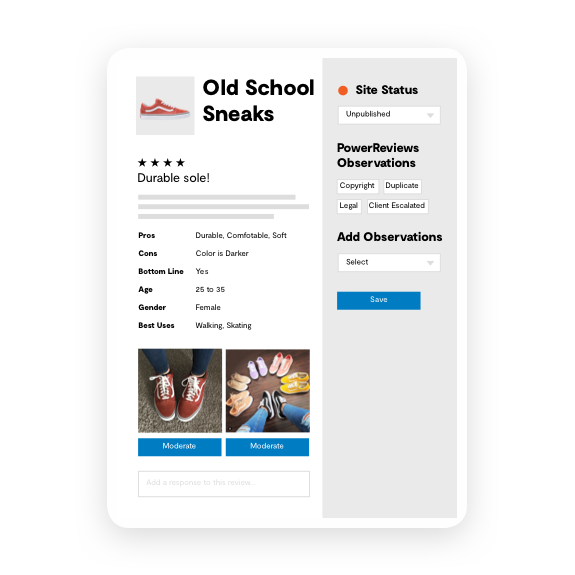
See what customers are posting visual content, leaving multiple reviews and certain keywords that pertain to your products. For some brands, this sounds like a lot of manual work.
We get it.
However, we built Product Pulse specifically for this reason. PowerReviews provides brands and retailers with a sentiment analysis tool to easily dig through review content and find helpful insights.
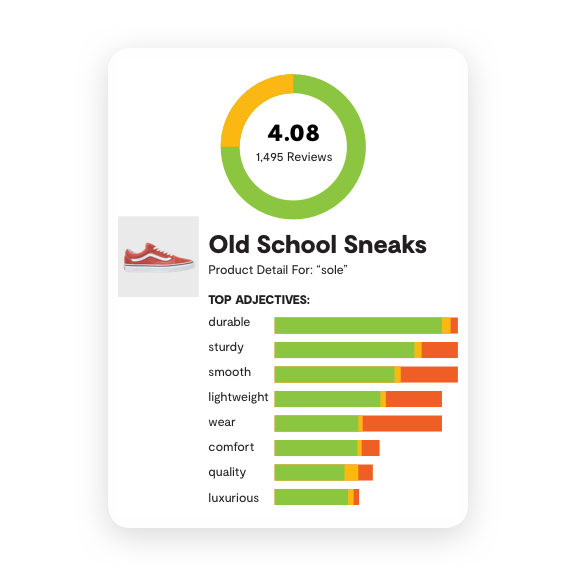
Want to see it in action? Request a demo today!
4. Review Your Sales Reports
Try to go through your sales reports to see your most active customers. If someone is buying from you repeatedly, chances are they’re a fan of your brand and they’ll happily advocate for you.
This is also a great opportunity to help form your target audience for brand advocates. Sales data let’s you segment your audience, develop messages and find new consumer insights.
It’s about how you connect these insights to your advocacy program!
5. Consider Your Employees’ Communities
Your employees are excellent brand advocates.
Think about it: they work for you, so they know all about your products. And since your staff are already familiar with your story, brand guidelines and rules of conduct, getting them on board your brand advocacy program will be an easy process.
One example of a company that invests in employee brand advocacy is Macy’s. Last year, the retailer launched Macy’s Style Crew, a community of Macy’s employees who are actively posting beauty and fashion content featuring Macy’s products.
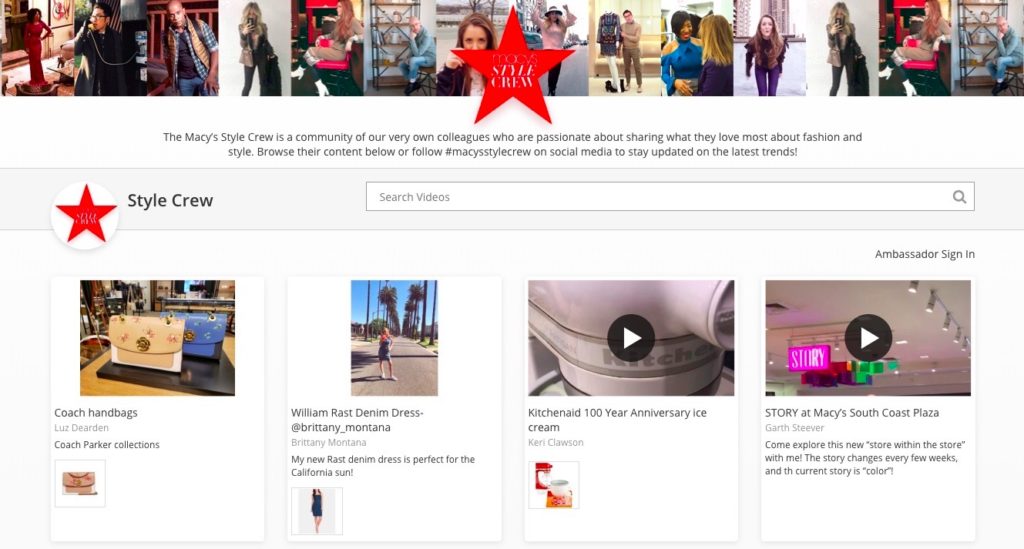
Don’t be afraid to use the power of your employees’ communities, like on social media, to promote and communicate their love for your brand.
How to Enable Brand Advocates
Have you already identified people you want to work with? Great! The next step is to connect with brand advocates and encourage them to spread the word about your products to their network.
The following action steps can help you do that:
Be Authentic With Your Outreach
There are several ways to get in touch with brand advocates and the right approach depends on the channel they use. For some brand advocates—such as customers who’ve left reviews—email is the most efficient way to get in touch.
For others, social media comments or direct message are a better approach. Regardless of how you decide to get in touch with them, strive to be authentic and relatable with your approach.
Woo hoo! Welcome to the Harry's team.
— Harry's (@harrys) April 15, 2019
Let your advocates know that you’re grateful for the business and the positive words they’re sharing. Specifically reference the products that they bought or the content they shared, so that they feel like you’re personally connecting with them.
The luggage brand Away, for example, sends personalized replies to customers who mention its brand on social media.
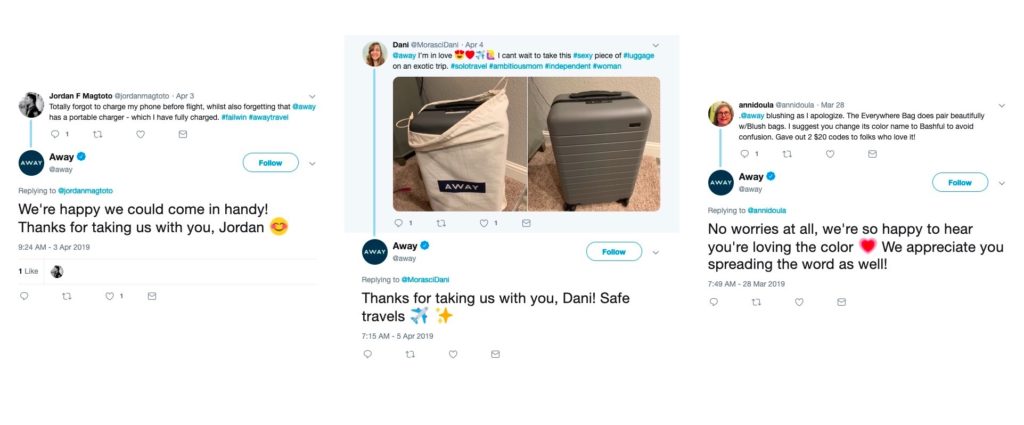
Incentivize Them to Share
Offer up incentives such as discounts and rewards for people who share your products with their friends. To maximize efficiency, integrate this effort with your rewards or loyalty program, so members easily earn points for their referrals.
Buda Juice, a company that sells pressed juices, for instance, includes friend referrals and social sharing in its loyalty program. Members earn $50 points— equivalent to $5—for every friend they refer who makes a purchase. 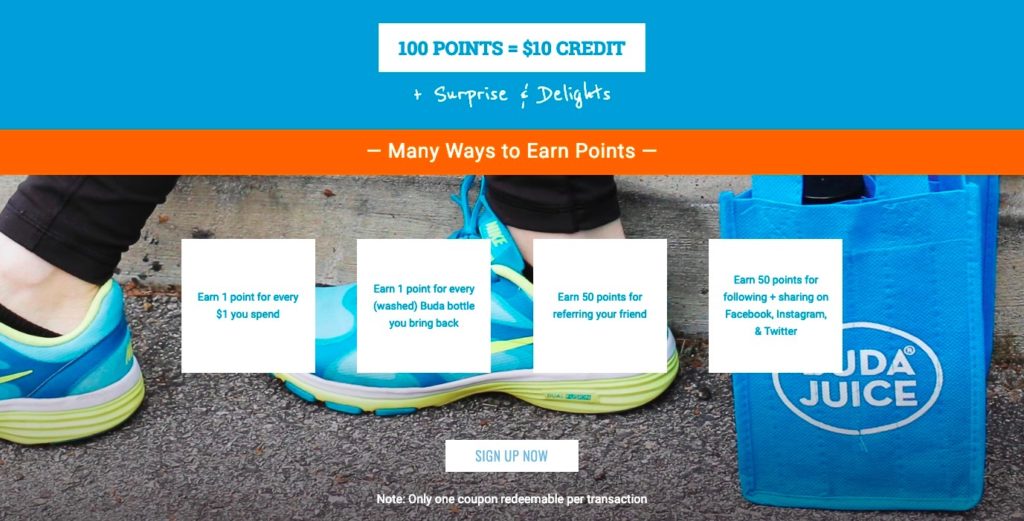
Another way to earn? Buda Juice gives customers 50 points for following the brand and sharing its content on Facebook, Instagram and Twitter.
Offer Free Samples
Another way to encourage advocates to spread the word about your products? Give them merchandise to talk about. Implement a product sampling program, in which you send free samples to select customers.
If you select the right brand advocates (i.e., highly engaged individuals who fit your target market), then chances are good that they’ll review your products.
Case in point: Vornado, a brand that sells fans, heaters, air purifiers and humidifiers, ran a product sampling initiative to garner reviews for its new products as well as specific items in its catalog.
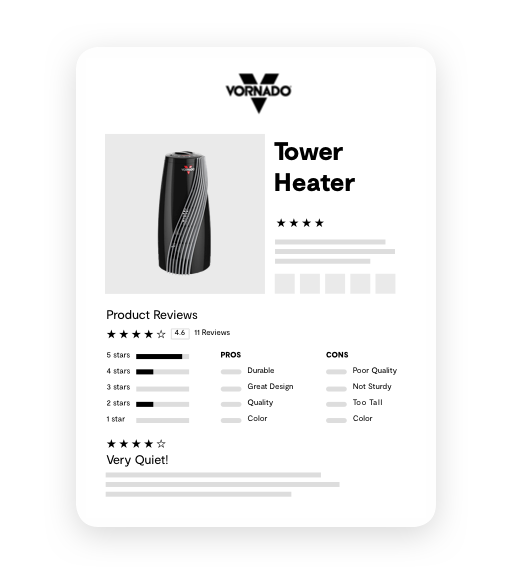
The program saw a whopping 97% response rate from advocates who wrote a review after receiving product samples. What’s more, the reviews collected from the initiative were 44% longer, indicating that the users who wrote them were highly engaged.
Build Relationships, Not Just Campaigns
Brand advocacy works best when you build relationships, as opposed to one-and-done campaigns. If you’re going to establish a brand advocacy program, you should commit to constantly engaging with your advocates.
You need to do the following, consistently:
- Follow your top brand advocates on social media
- Monitor your social feed for mentions and tags
- Share and reply to the posts of brand advocates
The key is to routinely do these things. You want to be known as a brand who consistently connects with its customers and advocates. In doing so, you’ll not only encourage brand advocates to keep spreading the word about your products, but you’ll also attract new ones.
The apparel retailer Showpo is a great example of a brand that does an excellent job with brand advocates. Their customer engagement strategy is on point as they quickly and regularly promote their buyers.
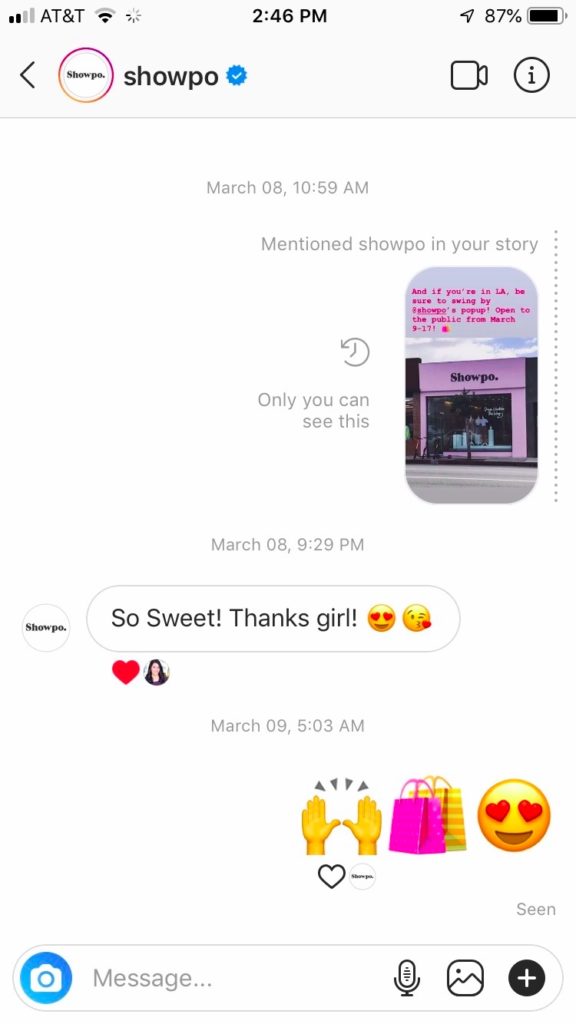
The Showpo regularly “likes” posts from its customers. Its team also makes an effort to send direct messages to those who mention the brand on social media.
Additionally, Showpo regularly reposts customer content featuring its products. This is a great way to keep customers engaged.
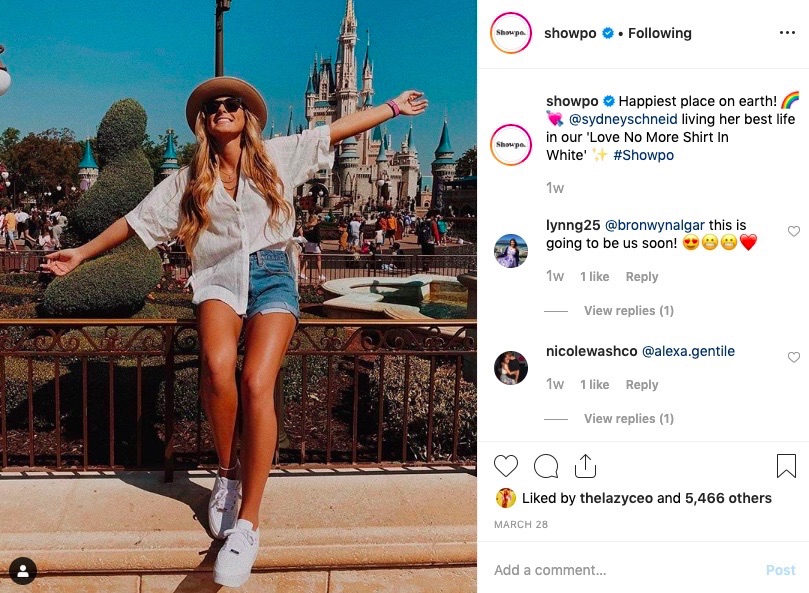
- Pro tip: If you’re looking to actively share and repost the content of your followers, manage all your efforts through a visual marketing and social content platform that enables you to stay on top of communications (e.g., outreach messages, permission requests for reposting, etc.) from one place.
Doing so will make your advocacy efforts more efficient, and you’ll easily track your shares and reposts with ease.
Tap into the Power of Communities
You can further strengthen your relationships with advocates by building a community around your brand. Make people feel that they are part of a group of like-minded individuals.
Doing so reinforces the connection that your customers have with your brand — and with each other. This boosts loyalty and keeps you top of mind which, in turn, leads to more word of mouth and referrals.
The fitness brand Peleton is a master at community building. Peleton was one of the first brands to leverage Facebook groups.
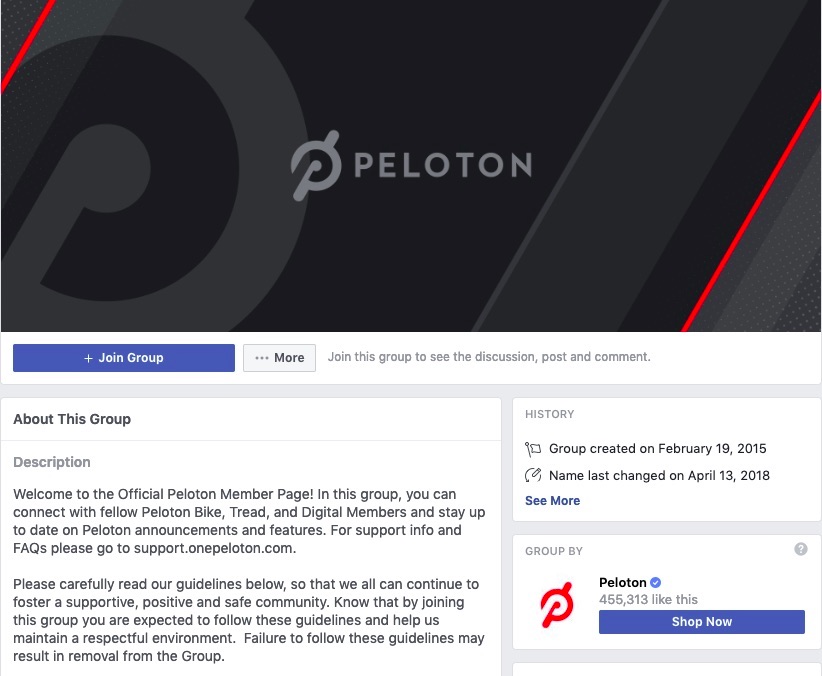
It created the Official Peleton Member Page, a place where customers can share stories, ask questions and stay up-to-date with company updates.
The effort proved to be successful. Peleton’s Facebook group has more than 164,000 members and sees 200+ posts per day. The initiative even led to spin-offs, including the Official Peloton Mom Group, Official Peloton Power Zone Pack and Official Peloton UK Member Group.
See if you can adopt a similar approach. If you have an active base of customers and advocates, create a community where they can meet like-minded people and build a stronger relationship with your brand.
Brand Advocacy Is a Must in Marketing
As more consumers crave authenticity in their social and brand interactions, traditional advertising and endorsements just won’t cut it anymore. You need to start enabling the most active members of your customer base to advocate for your brand.
Doing so will lead to higher brand awareness, favorable word of mouth—and ultimately—more sales.






